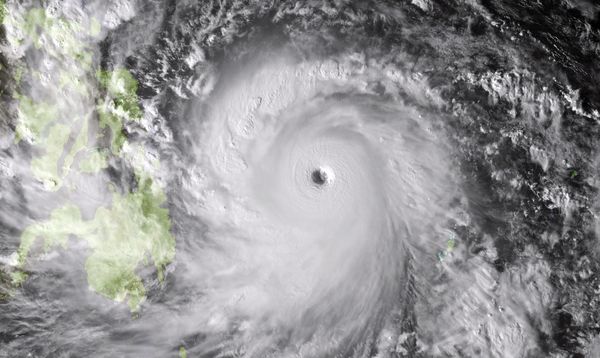Was Typhoon Haiyan Due to Climate Change?
The most common question I have had in the last couple of days: “Was climate change responsible for Typhoon Haiyan that devastated the Philippines.” Variations come in e-mails and were put to me this evening on the Fusion TV network by popular news anchor Jorge Ramos. Fair question.
(A similar question was raised a year ago, after Sandy. Months later, many experts decided they could statistically make that connection.)
Atlantic Hurricanes are the same thing as Pacific Typhoons. Both are fundamentally caused by high levels of ocean heat. Like most weather phenomena it is a complex recipe including air and ocean currents, barometric pressures, wind shear and more.
Even though the ocean is 1.5 degrees F (.85 degrees C) warmer than it was a century ago, it is hard, if not impossible, to say that one particular storm was caused by higher amount of heat. (A good metaphor for the problem is: Imagine a basketball player that normally gets 20 points a game. Suddenly he starts getting 50 points a game and is found to be on steroids. Can you say that one particular basket came from the steroids? No, BUT the pattern change can be attributed.)
As the atmosphere and oceans continue to warm, the weather patterns will change in totally unpredictable ways due to the incredible complexity of the weather system. Some things we can already observe due to the warming oceans. For example hurricane season in the Atlantic used to be June through September. Now the months have extended with some of the powerful storms very late in the year, witness Sandy, and now Haiyan in late October and early November. Thirty years ago, the ocean heat levels generally did not support them.
In the last decade we have had abnormal patterns of the El Nino / La Nina ocean currents in the Pacific defying a lot of the models and forecasts. Not only do they impact storms but farmers in the middle of the US, in Iowa and Kansas, can associate rainfall changes with what is happening in the Pacific.
In fact the torrential rains — sometimes referred to as monsoons — are one clear effect of warmer ocean temperatures. Warmer oceans mean more evaporation, more moisture in the air. That will come down as rain, and if the local airmass is cold enough, it will come down as snow, again perhaps in abnormal places at abnormal times of the year — as I explained in a recent post “Why South Dakota Blizzard Fits with Global Warming.”
And as those rain patterns change there will be droughts too — providing plenty of opportunity for those that are confused or want to confuse others to point out the inconsistency of more snow with global warming.
While we are clearing up misunderstandings, it should be noted that the earthquakes that have also hit the Philippines are definitely NOT associated with the climate and weather events. Earthquakes are a result of seismic activity — essentially the movement of the plates of the Earth’s crust. In turn they are the cause of tsunamis.
There are only a few things I know for sure about the future:
- The typical weather patterns of the last few centuries are largely gone. The gradually (or not so gradually) warming temperatures have destabilized our climate.
- Moisture in the atmosphere will increase, coming down as record rain and snow events.
- Sea level will get ever-higher due to the shrinking glaciers, the ice sheets on Greenland and Antarctica, and the thermal expansion of seawater. Higher sea level will push the shoreline inland, will extend the impact of extreme high tide (“King Tides”), and will elevate the damage of any given storm.
We are in a new era. Even if we make all the right moves to reduce greenhouse gases (which we are not doing) there is a lag time, or inertia, in the system, such that we will not soon return to the “normal” weather patterns that most of us took for granted. Even though it will take decades, the sooner we stop the rise in greenhouse gas levels, the sooner things can slowly return to that past stability.

